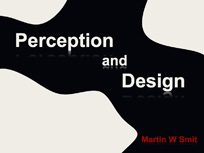Elma Durmisevic
Michael McDonough
Ton Venhoeven
Ahmet Hadrovic
Michael Braungart
Marcel Vroom
Wim Poelman
Rudi Daelmans
Martin Smit
Nirvana Pistoljevic
Natasa Perkovic
Sanja Durmisevic
Miriam Losse
Jan Brouwer
Martin Wollensak
Thomas Bednar
Maarten Dansen
Jaap Wiedenhoff
Adnan Pasic
Ivan Straus
Job Roos
Boran Pikula
Dzenana Bijedic
Haris Hadzialic
Ejub Dzaferovic
Almedina Hadzic
Alisa Grabus
Sanela Klaric
Azra Korjenic
Ken Yeang
Dushko Bogunovich
Michael McDonough
Ton Venhoeven
Ahmet Hadrovic
Michael Braungart
Marcel Vroom
Wim Poelman
Rudi Daelmans
Martin Smit
Nirvana Pistoljevic
Natasa Perkovic
Sanja Durmisevic
Miriam Losse
Jan Brouwer
Martin Wollensak
Thomas Bednar
Maarten Dansen
Jaap Wiedenhoff
Adnan Pasic
Ivan Straus
Job Roos
Boran Pikula
Dzenana Bijedic
Haris Hadzialic
Ejub Dzaferovic
Almedina Hadzic
Alisa Grabus
Sanela Klaric
Azra Korjenic
Ken Yeang
Dushko Bogunovich

Lecture:
Perception and design
17:30h
Day three, Sunday 11 September
Collegium Artisticum, Sarajevo
MARTIN SMIT
After graduating from the Delft University of Technology in Holland he worked for about 13 years in Israel as an architect and as a teacher. In 1998 he returned to Holland and worked for the next ten years mainly in management. Starting as a project director he ended up as a partner and was responsible for a group of more than 40 people. One of the bigger projects was a retail project for the Dutch ABNAMRO bank. It comprised over 300 branches.
At the same time he started his PhD research at the Delft University of Technology on design processes. In 2008 he successfully defended his thesis
In 2008 he started his own design practice: Martin W Smit Architects. Conceptual design and design process management are the foundations for a strong creative process that stimulates users participation. Most of the projects are educational building. The designs feature an extensive use of color patterns and includes landscape projects.
In 2010 he became chairman of Booosting. This non-profit organization encourages innovation in architecture. He is a guest lecturer at the Delft University of Technology and regularly speaks and writes about architecture and technology.
At the same time he started his PhD research at the Delft University of Technology on design processes. In 2008 he successfully defended his thesis
In 2008 he started his own design practice: Martin W Smit Architects. Conceptual design and design process management are the foundations for a strong creative process that stimulates users participation. Most of the projects are educational building. The designs feature an extensive use of color patterns and includes landscape projects.
In 2010 he became chairman of Booosting. This non-profit organization encourages innovation in architecture. He is a guest lecturer at the Delft University of Technology and regularly speaks and writes about architecture and technology.
Perception and Design
In architectural design processes the emphasis is usually on the design itself and less on the users' perception. If buildings have been designed taking all the sustainability factors into account but the perception by the user is negative the building won't last very long and will not be very sustainable.
In four case of realized architectural projects the development of the concept in to the design is described and the users perception is analyzed. Three of the projects have a concept that is taken from outside architecture and the fourth project has a concept that originates in architecture.
"Tulips for Wellant" is the upgrading of the facade of a school. The concept was the result of an analysis of the way the student decorated the interior with their products and the fact that the school offers so called "Green Education". Referencing to a flower bed a color pattern was created and this pattern was developed into a design for the facade. The users perception of the facade was very positive and the school wanted the color pattern to be applied to the student lockers inside the school. Later on the people of the school started to apply the color pattern to the interior of the school. Though not all the users know the origin of the concept the design is recognized by the users.
'Beach and Ocean" started by giving an identity to a rather anonymous school canteen. From the analysis of the existing spaces the concept of a beach and an ocean was created. By adding a few colors and a few elements the canteen got a different identity. The users liked the result and the student council requested permission to make a beach volleyball area in the garden of the school, next to the canteen. The permission was granted and the student themselves designed the Beach.
"Wellant goes Fibonacci" is the building of brick elements in a garden by student for the Dutch National Brick Contest. The concept is based on leaves that have fallen on the ground. The distance between the leaves is according to the Fibonacci sequence. During the design process a short movie was made that showed the concept of the design. The users do recognize the concept and were encouraged to design themselves the area between the brick leaves according to the Fibonacci sequence.
The "Loft" is the changing of an existing computer and library facility of a school into floral and interior design classrooms. The concept of a loft was created. In contrast to the previous projects, only words and no reference pictures were used in the development of the concept and the design. Brick and concrete were left exposed as much as possible. The users do identify with the concept and the design and consider it to be an environment that stimulates their creativity
Users' perception can be a integral part of the design process and the presentations during the process. Users' perception can also result in users' involvement. The users can be involved in the creation of the concept and the development of the design.
In architectural design processes the emphasis is usually on the design itself and less on the users' perception. If buildings have been designed taking all the sustainability factors into account but the perception by the user is negative the building won't last very long and will not be very sustainable.
In four case of realized architectural projects the development of the concept in to the design is described and the users perception is analyzed. Three of the projects have a concept that is taken from outside architecture and the fourth project has a concept that originates in architecture.
"Tulips for Wellant" is the upgrading of the facade of a school. The concept was the result of an analysis of the way the student decorated the interior with their products and the fact that the school offers so called "Green Education". Referencing to a flower bed a color pattern was created and this pattern was developed into a design for the facade. The users perception of the facade was very positive and the school wanted the color pattern to be applied to the student lockers inside the school. Later on the people of the school started to apply the color pattern to the interior of the school. Though not all the users know the origin of the concept the design is recognized by the users.
'Beach and Ocean" started by giving an identity to a rather anonymous school canteen. From the analysis of the existing spaces the concept of a beach and an ocean was created. By adding a few colors and a few elements the canteen got a different identity. The users liked the result and the student council requested permission to make a beach volleyball area in the garden of the school, next to the canteen. The permission was granted and the student themselves designed the Beach.
"Wellant goes Fibonacci" is the building of brick elements in a garden by student for the Dutch National Brick Contest. The concept is based on leaves that have fallen on the ground. The distance between the leaves is according to the Fibonacci sequence. During the design process a short movie was made that showed the concept of the design. The users do recognize the concept and were encouraged to design themselves the area between the brick leaves according to the Fibonacci sequence.
The "Loft" is the changing of an existing computer and library facility of a school into floral and interior design classrooms. The concept of a loft was created. In contrast to the previous projects, only words and no reference pictures were used in the development of the concept and the design. Brick and concrete were left exposed as much as possible. The users do identify with the concept and the design and consider it to be an environment that stimulates their creativity
Users' perception can be a integral part of the design process and the presentations during the process. Users' perception can also result in users' involvement. The users can be involved in the creation of the concept and the development of the design.

© 2011 SARAJEVO GREEN DESIGN FESTIVAL
